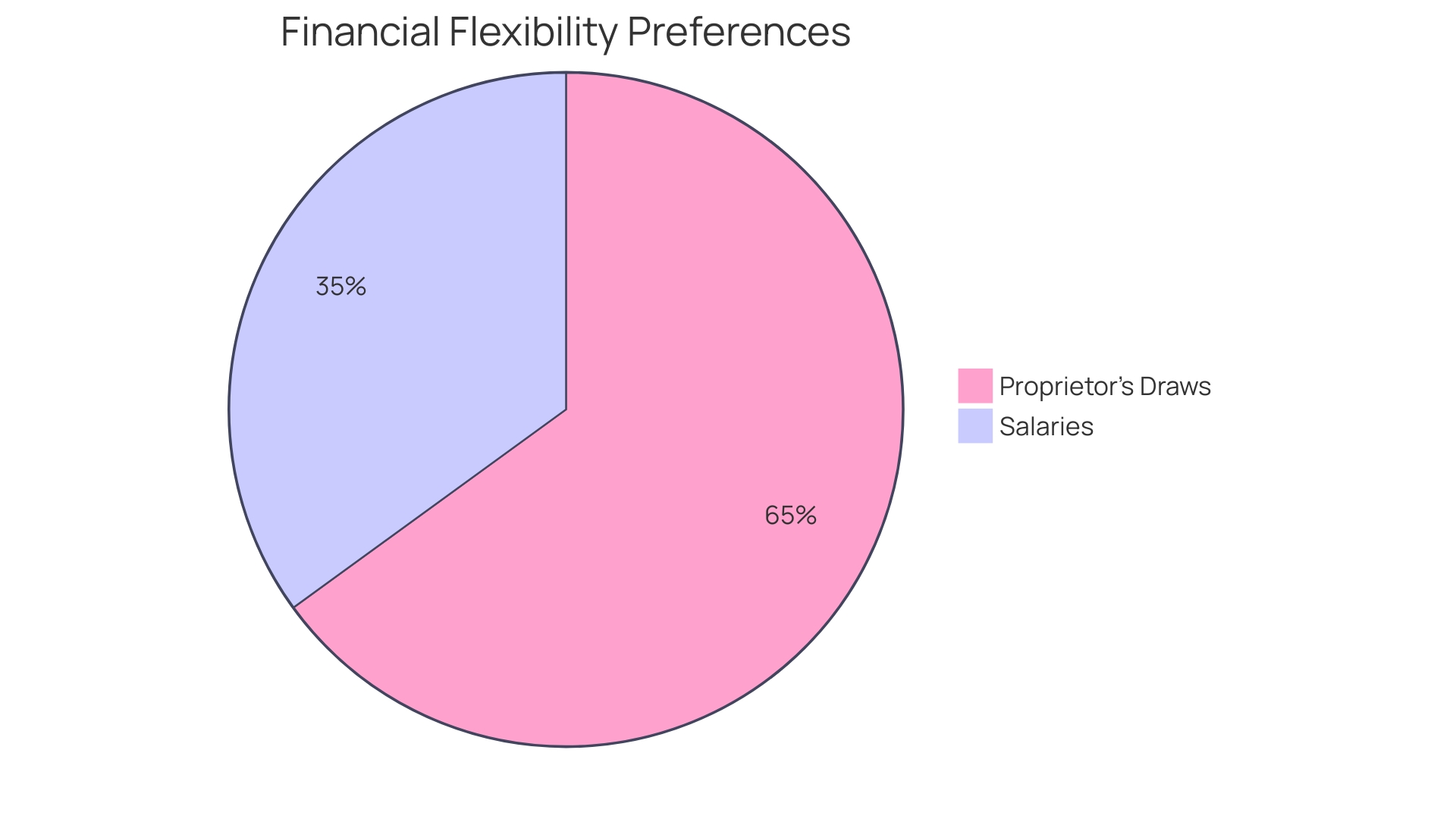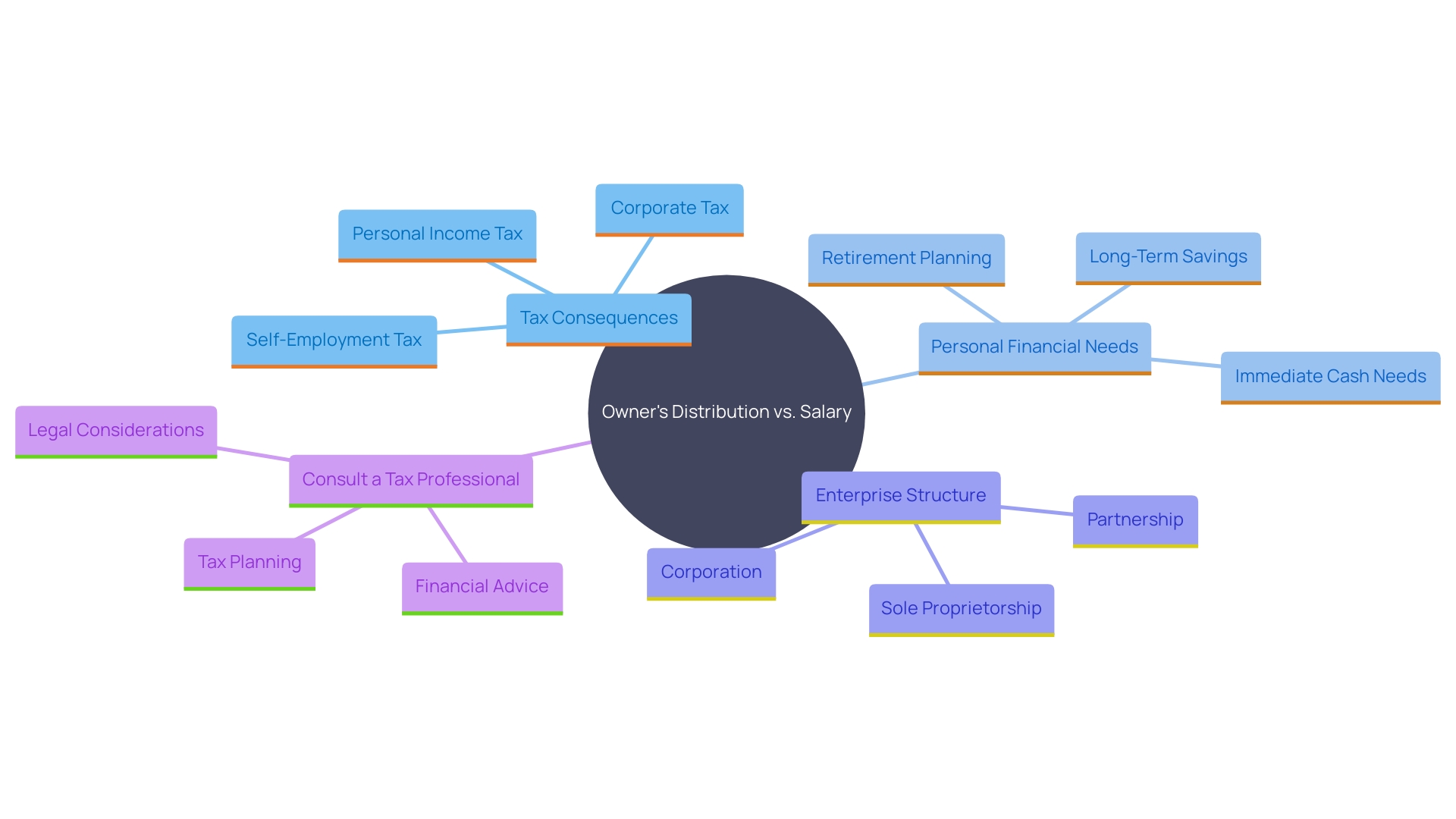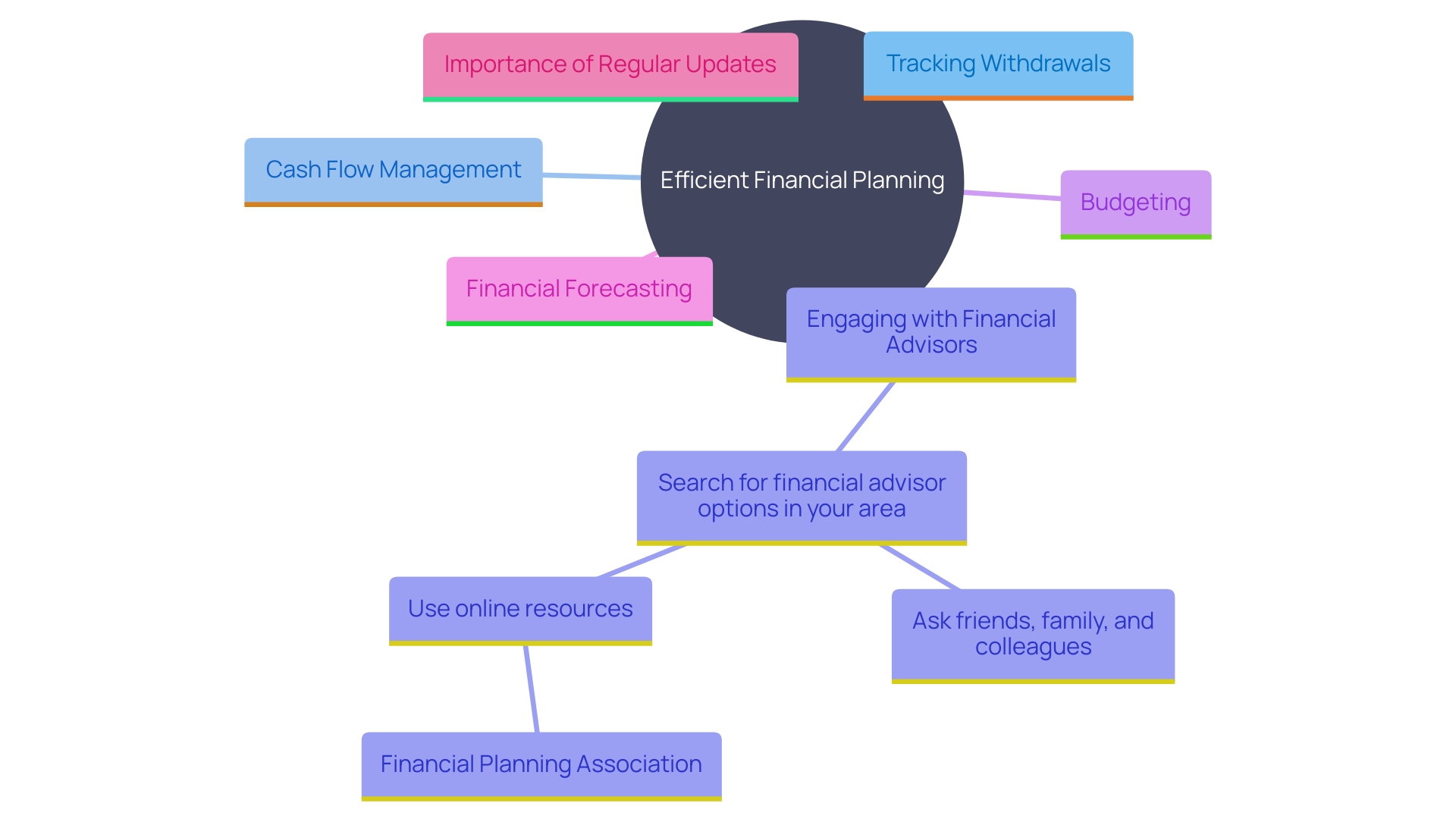Introduction
Navigating the complexities of business finance is a critical task for any entrepreneur, and understanding the mechanisms of owner’s draws is a fundamental aspect of this process. An owner’s draw allows business owners to withdraw funds from their business for personal use without the immediate burden of employment taxes, offering a flexible approach to managing business finances. This flexibility is particularly vital for small business owners who often face challenges in securing capital and need adaptable financial strategies to maintain cash flow.
Owner’s draws are predominantly used in sole proprietorships, partnerships, and limited liability companies (LLCs), providing a straightforward means of profit distribution that aligns with the less formal structures of these business types. However, with this method comes the responsibility of understanding its tax implications. Unlike salaries, owner’s draws are not taxed at the point of withdrawal but must be reported as personal income, affecting overall tax liability.
Consequently, business owners must navigate the nuances of self-employment tax and plan their draws meticulously to avoid unexpected tax burdens.
Choosing between an owner’s draw and a salary requires a strategic approach, considering both the tax implications and personal financial needs. A well-informed decision involves evaluating the business structure, personal circumstances, and long-term goals. Engaging with financial advisors and conducting thorough financial planning can optimize tax strategies and ensure sustainable financial health.
Effective management of owner draws is not just about maintaining cash flow but also about fostering financial stability and growth, making it a cornerstone of successful business operations.
What is an Owner’s Draw?
A proprietor’s withdrawal is a way for entrepreneurs to extract funds from their enterprise for personal purposes. Unlike a salary, which is a fixed payment for work performed, a proprietor’s draw is not subject to employment taxes at the time of withdrawal. This enables proprietors to access funds while preserving adaptability in how they handle their financial resources. According to the Fiserv Small Enterprise Index, small enterprises have demonstrated resilience in changing economic conditions, making flexible financial management more essential than ever. Furthermore, a recent report emphasizes that small enterprise proprietors frequently encounter challenges in obtaining funds, making withdrawals an essential resource for sustaining cash flow without the immediate tax obligation. As one small enterprise representative shared, the ability to withdraw funds without the constraints of payroll taxes can significantly alleviate the stress of managing daily operations, allowing for a more agile response to market demands.

Types of Businesses That Can Use Owner’s Draws
Owner’s withdrawals are a prevalent method for distributing profits in sole proprietorships, partnerships, and limited liability companies (Llcs). ‘These organizational structures offer significant flexibility, enabling owners to take profits out of the entity as needed, without the formalities typically associated with corporate frameworks.’. On the other hand, corporations usually compensate their employees, including shareholders, through salaries and dividends rather than draws. This distinction is crucial for understanding the tax implications and administrative requirements associated with each type of enterprise. For example, transitioning from a sole proprietorship to an LLC or corporation involves registering the new entity with the state and understanding the different tax and legal obligations. This flexibility in profit distribution can be particularly beneficial for businesses aiming to maximize value and growth, even if that means generating less profit in the short term.
Tax Implications of Owner’s Draw
Owner’s withdrawals can have significant tax implications. Unlike salaries, advances are not taxed at the time of withdrawal. However, owners must report the total income from their enterprise on their personal tax returns. This means that even though draws are not taxed upfront, they can affect the overall tax liability, as the income is still subject to personal income tax. For example, if you own 10% of a company that made $1 million in profits, your income would include $100,000 from the company. At the highest federal income rate of 37%, you would owe $37,000 in fees on that income. This is similar to how partners in law firms or hedge fund managers are taxed, where their share of the firm’s income is considered taxable income. Consequently, it is essential to recognize that while withdrawals from the business offer adaptability in obtaining profits, they do not relieve you from paying levies. Proper planning and consultation with a tax professional can help you manage these implications effectively.

Self-Employment Tax and Owner’s Draw
Business owners who withdraw funds from their company are classified as self-employed, making them liable for self-employment tax on their net earnings. This tax includes both Social Security and Medicare taxes, collectively known as FICA taxes, which total 15.3% for the tax year 2022. According to the Federal Insurance Contributions Act of 1935, this ensures consistent contributions to Social Security and Medicare funds. Owners should carefully plan their withdrawals to avoid unexpected tax liabilities and consider consulting a tax professional to navigate these obligations effectively.
Choosing Between an Owner’s Draw and a Salary
Determining whether to take an owner’s distribution or a salary requires thorough evaluation of both tax consequences and personal financial requirements. A draw offers flexibility and can be adjusted based on cash flow, while a salary provides consistent income and may be beneficial for tax planning. Owners should evaluate their enterprise structure, personal financial situation, and long-term goals when making this decision. For instance, functioning through a corporation can provide substantial tax advantages, such as paying less tax on the first $500,000 of active income. This can result in more money left for retirement investments. Furthermore, employing a tax consultant can be extremely beneficial, particularly when preparing for a sale. They can guide you on altering your business structure to maximize tax benefits. Performing a cash flow analysis can also assist in assessing expenses and predicting future income, making the choice between a withdrawal and a salary more informed and strategic.

Strategic Financial Planning for Owner’s Draw
Efficient financial planning is essential for managing withdrawals by proprietors. ‘Entrepreneurs should meticulously track all draws, ensuring enough cash flow to support both personal and professional needs.’. Engaging with a financial advisor or accountant can further optimize tax strategies and ensure compliance with tax regulations. Mitt Mehta from SENTA Partners emphasizes that financial management and planning are essential for resource allocation, financial stability, and decision-making. Formulating a comprehensive plan with budgeting, financial forecasting, and regular updates is essential to prevent setbacks such as bankruptcy. Remember, cash flow is the lifeblood of any small business, as highlighted by recent discussions on financial management.

Conclusion
Understanding the intricacies of owner’s draws is essential for small business owners aiming to navigate their financial landscape effectively. Owner’s draws provide a flexible method for accessing funds without the immediate burden of employment taxes, making them particularly valuable in an unpredictable economic climate. This method is predominantly utilized in sole proprietorships, partnerships, and LLCs, where profit distribution can be managed more informally compared to corporations.
However, with this flexibility comes the responsibility of comprehending the associated tax implications. Owner’s draws are not taxed at withdrawal, but they must be reported as personal income, influencing overall tax liability. Business owners must also consider self-employment taxes, which add another layer of complexity to financial planning.
Therefore, strategic decision-making is crucial when determining whether to opt for a draw or a salary, weighing personal financial needs against tax implications.
Effective financial planning emerges as a cornerstone for managing owner’s draws successfully. By engaging with financial advisors and maintaining meticulous records, business owners can optimize their tax strategies and ensure compliance with regulations. Ultimately, a well-informed approach to owner’s draws not only enhances cash flow but also fosters long-term financial stability and growth, ensuring the sustainability of the business in the face of evolving market demands.


